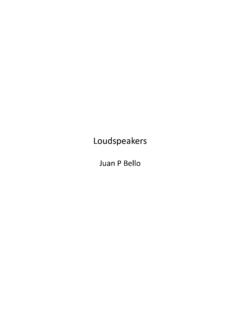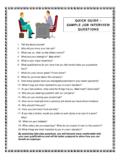Transcription of G o rdnEwa s Ph - CCNR
1 Figure 1 Figure 2 A Model of the Uranium Atom A Monument to the Splitting of the Atom Splitting the Uranium Atom Nuclear Fission Uranium is the heaviest metal that can be mined from the earth. Uranium was discovered about 200 years ago, but it had no practical use until the beginning of World War II. In 1938-39 scientists discovered that an atom of uranium can be broken into two or three pieces when struck by a fast-moving particle called a neutron. The splitting of a uranium atom releases energy. This process is called nuclear fission , since the centre of an atom is called its nucleus. When a uranium atom splits it gives off more neutrons, which can then split more atoms, and so the energy level rapidly multiplies. When trillions of atoms are split almost simultaneously, the energy released is the power of the atomic bomb. The atomic bomb was the first practical use of uranium. Figure 1 shows a model of the uranium atom; it is on display at Oak Ridge, Tennessee.
2 That is where the uranium explosive was prepared for the bomb that destroyed the city of Hiroshima. Much of the uranium needed for that bomb came from a mine at Great Bear Lake in the Northwest Territories. Figure 2 shows a Russian monument built to celebrate the splitting of the atom. The semicircles represent the energy that is released when the atom is split. The two small hemispheres represent the broken pieces of the uranium atom, called fission products . These fragments of uranium atoms are in fact the atoms of new radioactive materials, most of which cannot be found in nature. There are over three hundred different kinds of fission products. They are much more radioactive than uranium, and are therefore much more harmful to living things. Fission products are scattered high in the air when an atomic bomb is exploded above ground; the solid varieties return to earth as radioactive fallout. The Inuit people received more radioactive fallout in their bodies than other Canadians because they ate the meat of the caribou who in turn ate contaminated lichen.
3 Uranium is the only naturally-occurring material that can be used to make an atomic bomb. Plutonium is also used for this purpose, but it is man-made; in fact it is made from uranium. speaker s Notes for the Nunavut Planning Commission Gordon Edwards (all photos copyright R. Del Tredici except 3, 7, 9, 11, 19) Gordon Edwards ~ speaker s Notes for the Nunavut Planning Commission 2 Figure 3 Figure 4 Henri Becquerel discovered radioactivity Radioactive materials lodge in the body Atomic Radiation Radioactive materials In 1896 Henri Becquerel (Figure 3) discovered radioactivity. He found that a chunk of uranium ore gives off an invisible kind of light, now called atomic radiation . One type of atomic radiation has great penetrating power, similar to X-rays; this type is called gamma radiation . Less penetrating forms of atomic radiation also exist, called alpha and beta rays. Atomic radiation is harmful to living things because it damages cells and often makes them grow wrong.
4 Atomic radiation is caused by the spontaneous disintegration of unstable atoms. Any material which gives off atomic radiation is said to be radioactive . There are dozens of radioactive materials that exist in nature and hundreds more are created by man as fission products. One becquerel of radioactivity indicates that one atomic disintegration is taking place every second. Radioactivity is not the same thing as nuclear fission; unlike fission, it cannot be controlled. Scientists do not know how to speed up, slow down, start or stop radioactivity. By the 1930s it was well known that exposure to atomic radiation can cause many kinds of biological damage, including radiation burns, anemia (blood damage), cataracts (eye damage), cancer, leukemia, damage to unborn babies, and damage to the sperm and eggs of men and women. Thus radiation protection is very important. However, once radioactive materials enter the body, the damage is done internally and protection becomes difficult or impossible (Figure 4).
5 Each radioactive material has its own characteristics, and each one behaves differently in the environment and in the body. Radium-226 behaves like calcium, so inside the body it goes to the bones, the teeth, and mother s milk. Radon-222 is a gas; it is inhaled into the lungs. Cesium-137 resembles potassium; it goes into muscles. In these cases, the damage is done inside the body. The consensus of scientific knowledge is that any exposure to atomic radiation increases the risk of cancer and leukemia. There is no truly safe dose, but the risks are small when the doses are small. Gordon Edwards ~ speaker s Notes for the Nunavut Planning Commission 3 Figure 5 Figure 6 Face of a CANDU nuclear reactor Construction of a Spent Fuel Pool Nuclear-Generated Electricity High Level Radioactive Waste Until 1965, all of Canada s uranium was sold to the military for use in nuclear weapons. Some was used directly in bombs, some was converted to plutonium for use in bombs.
6 But since 1965 Canadian uranium has been sold only as fuel for nuclear reactors not bombs. A nuclear reactor is a machine that controls the nuclear fission process. It produces a steady stream of heat (caused by the splitting of uranium atoms) and plutonium (an atom of plutonium is created when a uranium atom absorbs a neutron without splitting). In a CANDU power reactor uranium fuel bundles are inserted into hundreds of tubes (Figure 5) where they will undergo nuclear fission. The energy released is used to boil water, and the resulting steam is used to spin a giant wheel ( turbine ) so as to generate electricity. When uranium atoms are split, fission products are created; so the spent fuel is millions of times more radioactive than fresh uranium fuel. An unprotected man standing one metre from a used fuel bundle just out of the reactor would be killed in a less than a minute. Irradiated nuclear fuel must be cooled even after the reactor is completely shut down.
7 The radioactivity of the fission products is so intense that the fuel, if not cooled, will overheat and melt at temperatures of thousands of degrees without the added heat of nuclear fission. This type of accident is called a meltdown. The overheated nuclear fuel can melt right through steel and concrete containment structures into the ground below, releasing radioactive materials in a cloud that can drift for thousands of miles. Reindeer in Lappland and sheep in northern England have been so contaminated due to a meltdown in Russia (Chernobyl) that they are still unfit for human consumption twenty years after the event. Even without a major accident, irradiated fuel remains dangerous for millions of years. It is so hot that it has to be cooled by circulating water in special pools (Figure 6) for at least 7 to 10 years after it has been removed from the reactor. Then it has to be stored somewhere safe for the next 10 million years, for it remains extremely toxic due to its radioactivity.
8 And at any time in the future, plutonium can be extracted from the irradiated fuel and used for atomic bombs. India s first atomic bomb, exploded in 1974, used plutonium from a Canadian nuclear research reactor. That reactor was a gift from the Canadian government. Gordon Edwards ~ speaker s Notes for the Nunavut Planning Commission 4 Figure 7 Figure 8 Marie Curie found uranium decay products The Radioactive Decay Products of Uranium-238 Uranium Decay Products Radium, Polonium, and Radon In 1898, Marie Curie (Figure 7) discovered something surprising. After removing the uranium from the ore that contained it, she found that the residues were a lot more radioactive than the uranium itself. She reasoned that there must have been something in the rock besides uranium some substance that is far more radioactive than uranium. After months of hard work, she found two new substances in the residues, previously unknown, that she named polonium and radium.
9 These substances are extremely radioactive. They give off both penetrating and non-penetrating forms of atomic radiation. Before long, one of Marie s students discovered a radioactive gas that is given off by radium. This was yet another newly discovered radioactive material called radon . It turns out that when a radioactive atom disintegrates and gives off atomic radiation, it becomes a completely different kind of atom, representing a new material altogether. This by-product material is called a decay product since it is produced as a result of atomic disintegration a process commonly called radioactive decay . In some cases a decay product is itself radioactive, and then, when its atoms decay they turn into yet another, different decay product. If that second decay product is also radioactive then you will get a third decay product, and possibly a fourth, a fifth, a sixth, and so on. Radium, polonium, and radon are three of the many decay products of uranium (Figure 8).
10 Gordon Edwards ~ speaker s Notes for the Nunavut Planning Commission 5 Figure 9 Figure 10 Young girls working as Radium Dial Painters Dene men displaying a 1931 gov t document Radium From Priceless to Worthless Radium soon became the most valuable substance on earth. By the 1920s it was selling for $100 000 per gram. Radioactivity was regarded as magical, and radium was used not only for sensible purposes like shrinking cancerous tumours, but also for foolish things. Young women (Figure 9) were hired to paint watch faces with radium paint to make them glow in the dark. By the 1920s many of these women had developed severe anemia. Some died quickly. Others had gums that became badly infected and teeth that began falling out. Their jawbones grew soft and were quite easily broken. The dentist who reported these symptoms used the phrase radium jaw to describe the situation. The cause was obvious.










